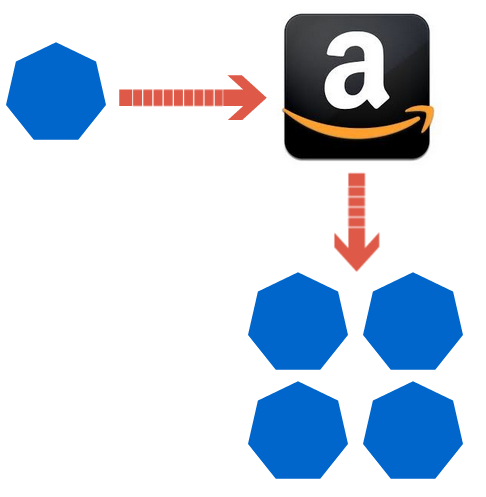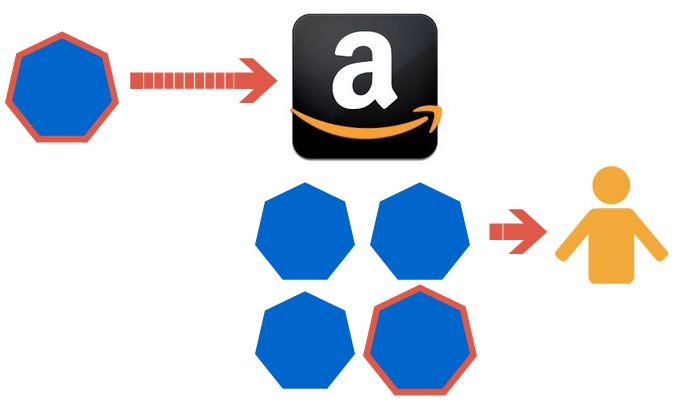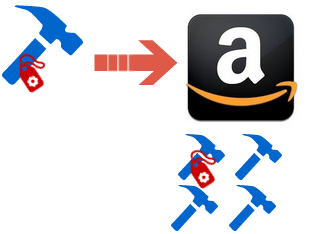How to Avoid Fraud with Commingling on Amazon FBA

In order to be received, stored at, and shipped from an Amazon fulfillment center Amazon requires retailers that sell on the marketplace using Fulfillment by Amazon (FBA) label their products for shipping.
Amazon’s fulfillment centers ask retailers to identify their products using unique product identifiers which include:
Amazon’s default FBA label setting is Labeled Inventory. Labeled Inventory requires a FBA label for each product you send (print from Seller Central) and identifies products you send as attributed to your seller account.
Amazon outlines more about labeling and label requirements and on its Labeled Inventory page, which highlights this helpful video:
If you are unable to print labels, consider Amazon’s FBA Label Service (includes per-unit fee).
The commingled inventory option provides the option for retailers to skip this label process by selecting the option of stickerless, commingled inventory.
Commingling inventory is essentially pooling your inventory with the inventory of other sellers at Amazon’s fulfillment center. Amazon packs, ships, and provides customer service for those products just as it does with all FBA orders. Items still need to be properly packaged by sellers for inbounding to Amazon’s fulfillment centers.

Instead of labeling each product unit, commingled inventory compiles the same product from different retailers using the UPC. Those products will be pooled together (regardless of seller) based on a barcode (UPC, EAN or JAN) for purchase fulfillment.
“When you choose to commingle inventory, your products become interchangeable with the same products from other sellers for both order fulfillment and removals.” – Amazon
So if you sell Widget A, you can send that widget to Amazon where it will be included with other Widget A’s that share the same UPC. If someone purchases the widget from Amazon through you as a seller- the product sent could come from you, Amazon, or another seller whose products are included in Widget A Commingled inventory.

Here is how Amazon explains commingled inventory:
Commingling inventory on FBA products is an option only for qualifying products which are:
If you choose commingled inventory as your inventory setting, remember this will not apply to products that don’t qualify for Commingling. Those products will require individual labels.
Commingling on Amazon has gotten a considerable amount of flak from both sellers and consumers. Some businesses have noted that fake products can get mixed in with the bunch, which leads to negative brand perception, negative reviews, and potentially even unwarranted product returns.
Commingling has become synonymous with issues such as fraud on Amazon, but the shipping problems are more a by-product of the way the system is set up. Commingling integrates products from across Amazon and outside sellers- a system which was designed to, and can benefit Amazon sellers.
“It is [fraud] also a result of the way Amazon manages inventory in its network of warehouses across the U.S. As more third-party sellers have signed up to offer products through Amazon and use its order-fulfillment services…in essence commingling products from third-party merchants with those supplied directly to Amazon by the brands themselves.”- WSJ

In addition to products which may not be the real deal, businesses using Commingling on Amazon face the issues of products which may be:
If you decide to stop using Commingling on Amazon you may be returned product units that are from another seller as they are sourced from the commingled inventory.
Commingled inventory often gets a bad rap, and sellers definitely lose a degree of control when choosing to commingle their inventory. However, there are also benefits and alternatives to using commingled inventory as a third party merchant using fulfillment by Amazon (FBA) on Amazon.
Commingling is designed to make shipping easier for retailers using FBA. It is an option for sellers who don’t have the time or resources to manage fulfillment themselves, or are shipping from a distant location which affects shipping times.
From a logistics standpoint, commingled inventory allows a sellers products to be placed more evenly around Amazon’s fulfillment network so that they can reach customers faster Since Commingled products are fulfilled by Amazon, sellers can take advantage of Amazon fulfillment centers- which are strategically placed around population centers to ensure quick delivery to customers all over the nation.
If a seller’s goods were only in the Phoenix fulfillment center, for example, it’s less likely an east coast customer would receive their product on the same or next day.
Sellers save significant amounts of time and labor investment using commingling by avoiding applying FBA labels to each product they send to Amazon. Imagine you sell 50 products using FBA, even if it only takes you 1 minute to add an FBA label, that’s still almost an hour of manual labor prior to shipping.
Choosing commingling also allows a seller to not have to apply FBA labels to the products they are sending to Amazon, as the original UPC barcode will suffice. As a result, a seller can find the process of sending commingled products easier and less prone to receiving errors at an Amazon warehouse.
A Seller might consider sending roughly 20% of their catalog into FBA (this will vary based on a number of factors). If this seller sends 29% of their catalog, and the store sells a large number of products- that’s a significant number of labels for Amazon. More labels means more margin for error. How many drinks do the Barista’s at Starbucks label a day, and how many of those are labeled wrong?
Sellers always have the option to sticker their FBA products with FBA labels. What this does is separate a sellers inventory of a given product from the same product being sold by other sellers (and Amazon themselves).
Sellers can execute this by printing FBA labels straight from their Amazon account when creating an FBA shipment or by using Amazon’s FBA labeling service (for a fee).

Strategically, a seller could consider offering products which are most at risk for fraudulent products (take the knock-off widget, for example) as non-commingled inventory, while sending the remainder of their FBA products as commingled.
There is no “right” or “wrong” to selecting whether to commingle your inventory, but understanding the risks and benefits of each strategy will allow a seller to make the most educated choice for their product set.
